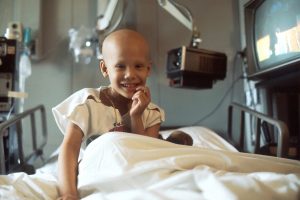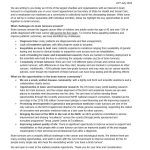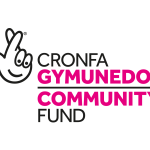Children’s Mental Health Week, 1-7 February
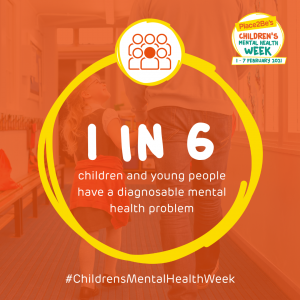
A brain tumour diagnosis affects the whole family whether a child has a brain tumour or an adult. little brainstrust is here to support all children and young people affected by a brain tumour.
The Children’s Society states that 1 in 6 children aged 5-16 are likely to have mental health problems, and 75% of young people with mental health problems are not being treated.
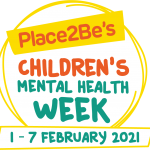
Unfortunately no child is protected from poor mental health, and being exposed to ill health or watching a loved one be poorly, can increase the likelihood of a child needing support with their mental health.
How Place2Be are helping
This week is Place2Be’s Children’s Mental Health Week, and the theme this year is ‘express yourself‘. We will discuss some of the awesome activities shared by this organisation below:
COVID is a stark reminder of the vital importance of planning and prevention, rather than relying on a cure. Half of lifetime mental illness starts by the age of 14. We know that providing effective support from an early age not only helps children cope with life’s challenges but can prevent problems from escalating and becoming more serious in adulthood. Schools, at the heart of our communities, provide the perfect setting to embed this supportive mindset and to ‘normalise’ discussions around mental health. – Place2Be
Helping find children something creative can support them to share their emotions. Here are a few ideas Place2be suggest:
- Ask them to draw how they feeling, watch this short video that explains how you can do this activity
- Reflect back on the last year and think about what has helped them before or is there a new interest they have. It might be baking, playing a musical instrument, riding their bike, dressing up or dancing, join your child in the activity that makes them happy and praise their efforts

During lockdown Place2be suggest PACE activities every day:
-
- Physical – go outside for a walk or do a home workout. It promotes healthy well-being and releases endorphins and reduces other stress hormones
- Achieve – setting little goals and achieving them daily. This could be the parent doing the laundry or a child finishing a project. Name the activity before your meant to do it and then congratulate each other once its completed.
- Connect – Connect with others virtually, yes it isn’t the same as seeing someone face to face but it’s nice for children to catch up with family and friends. Do you have a friend in a different part of the country or world, that could spare 10 minutes to chat with your child. A new person for them to talk might help.
- Enjoyment – This could be anything that makes your child’s heart sing. Maybe the one-off pizza for breakfast trick? Or a slice of their favourite cake? An extra episode of their favourite TV programme? Celebrate the little wins of the day.
Supporting your child living with a brain tumour
Following a brain tumour, many children experience feelings of depression, anxiety and overwhelm. For teenagers this could be the isolation from school and friends, or grief over losing the ability to do certain activities.
Communicating successfully is hard in normal situations, and harder still when there are all the serious things to address that come with a brain tumour diagnosis in your family. Here we have some ways that you can tackle some of the challenges that you may face when talking about issues relating to a brain tumour.
- Talk with your child. Children have overactive imaginations. If you don’t talk about this situation with your child then they will provide their own answers, which will probably be wrong. If your child doesn’t want talk to you, ask a close friend or relative that they are close to step in.
- For professional help, talk to your child’s healthcare team or GP for a referral to a neuro-psychologist.
- Self-care. Take care of yourself and put in place self-help strategies. For example if you like to do exercise to de-stress, tell your child why you are doing this. By taking care of yourself you are being a role model for them. Help them choose their own self-care strategies for when they feel stressed.
- At school. Talk to your child’s teachers, as some behaviours may vary when children are with teachers and peers. Keep communication open with their teachers to best support your child.

Young caregivers
A young caregiver is young person that may be helping around the house more when a loved one is poorly. A young carer can be a sibling of a child with a brain tumour, or the child of a parent with a brain tumour. It is important to recognise the feelings of young carers and support their mental health. Have a read of our Young Caregiver Know How to find out more about how you can support young people in this situation.
Download the Young Caregivers Know How.
Supporting siblings
 Finding out that your child has a brain tumour is not only distressing but it also can be confusing, isolating and overwhelming. These feelings may be felt by your other children too. Depending on their age, the diagnosis of their sibling may be met with increased love and care but may also result in anxiety, confusion or jealousy. Therefore, it is important to communicate and support each other during this period.
Finding out that your child has a brain tumour is not only distressing but it also can be confusing, isolating and overwhelming. These feelings may be felt by your other children too. Depending on their age, the diagnosis of their sibling may be met with increased love and care but may also result in anxiety, confusion or jealousy. Therefore, it is important to communicate and support each other during this period.
- Talk to them and ask them what is worrying them, and it’s okay to say you don’t know to their questions. Siblings are as confused as you are. Be as honest as you can be, information is best coming from you than Google.
- Siblings may feel isolated due to long stays in the hospitals. COVID has made it harder than ever for families to visit anyone in hospital. To alleviate this try and organise regular calls with siblings, make time for virtual games or try sending letters. If you are the parent on the ward, dedicate 10 minutes of time, on the phone or Zoom, where it’s just you and your child that is at home. Make time for 1:1 attention and it will make a huge difference.
We know it is hard explaining a brain tumour and holding the conversations that come with it. We have a guide called ‘How to Hold a Difficult Conversation’ that helps families clear their thoughts and identify how they are feeling, so that they can hold these hard conversations and be in control. Order a hardcopy for free by emailing hello@brainstrust.org.uk.

